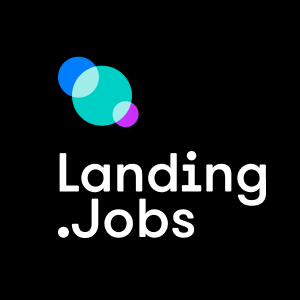CV stands for Curriculum Vitae and it basically means “course of life”. Resume is a French word that means “summary”. Despite meaning quite different things, both expressions are used in the professional world to mean the same thing: the first document you send to a company to show who you are and what you are capable of.
Technically, there is a difference between the 2 terms. A “CV” is an extensive document highlighting all the relevant experiences and skills. A “resume” is typically 1 page long and only tackles your most important experiences for the job you’re applying for. In reality, most companies mean “resume” when they ask for a “CV”, so you don’t need to worry about this distinction. If you’re not sure, you can always ask your point of contact, but the answer will almost always be “only one page, please”.
So, just to be clear, in this article, we’ll be discussing resumes, even if we use the term CV here and there. And the definition we used for “resume” already gave you 3 of the most important tips for creating an effective CV/resume:
- Boil it down to 1 page;
- Focus on the most important stuff and cut the rest;
- Tailor your resume to the company/position you’re applying for.
Those 3 points can probably already help you make some improvements, but let’s get into more specific key points and suggestions for improving your own CV.
How will your CV be read
The problem with most resumes is that the people writing them have no clue about how they will be read. Some people try to impress with beautiful wording, by including all their academic achievements since primary school or by listing all the skills they find on the internet that are relevant for the job. That’s not how you’ll catch their attention and make them want to meet you.
How will recruiters look at your resume? The answer is simple: “very, very fast”. Most recruiters will just scan through your CV in no more than 10 seconds. If there’s something that catches their eye, they will consider you for further tests or for an interview. If there’s something they don’t like, they will easily toss it away. Most times, it’s just a snap decision: yes or no. You don’t need to have the best CV among all the candidates, but you need to have one that will make the recruiter want to move forward with your application.
You should design your resume in a way that’ll make the recruiter understand your best accomplishments (and most relevant for the job) in just a brief skim. This is why you should stick to the essentials and format it carefully. Sometimes the resumes are even filtered using an algorithm before the recruiters read them. If you know or suspect that the company you’re applying to is using this system, you should use some small tricks to beat the algorithm, such as using keywords from the job description and using simple formatting.
Short, quantifiable and focused on accomplishments
Resumes should scream, “I’m the one you want for this job and here is the proof”. Every line on your resume should contribute to this goal. If it doesn’t, cut it. As we have seen already, resumes must be short, so you should definitely avoid blocks of text. If you have some, transform them into bullet points that should not exceed one line (maximum two, but try to avoid that). If you could say the same thing in fewer words, shorten it.
Recruiters want to see that you are capable of achieving results and excelling at whatever you do. They are not interested in the description of your daily tasks but rather in your accomplishments. Don’t just copy-paste your previous job description. Focus on the things that you did that were excellent (or good, at least), and make them measurable. If it’s vague, make it specific.
Using numbers to measure your accomplishments can also help people understand and evaluate your profile better. This is also something you should take into account, avoid too much technical jargon and keep it easy for anyone to understand.
Carefully targeted
As we already discussed, tailoring your resume to the company/position you are applying for it’s one of the key aspects of resume creation. Back in the days of laborious editing and paper applications, a generalized resume would be forgivable. Now that all you need to tailor your CV is some spare minutes, it’s not reasonable to send the same application to different companies and/or different positions. All you need to do is research the company a little bit and think about your previous experiences.
You should target it to the job description by emphasizing the skills and experiences that are aligned with the job requirements and preferred profile. You should also target it to the company’s product to illustrate how your past experience and personal interests are aligned with the goals of the company. Last but not least, you should also be aware of the company’s values and identity in order to highlight any experiences or situations that align with them.
Targeting is particularly important for people who are changing careers. For instance, if you have been working in QA for some years and want to change to web development, you must emphasize some experiences such as additional qualifications or parts of your previous job that relate to the new position. Also, if you’re changing to a company that is facing some particular problem, you should try to showcase your skills that would help tackle it.
Professionally formatted
When it comes to formatting your resume, you should make sure that anyone glancing at it will get the main information without much effort. If the recruiter can’t find what they are looking for, they will probably just toss it. You should consider using columns for organizing information (you can make the lines invisible) and you should definitely make use of bold to highlight key information.
In order to optimize the space you have, you may be tempted to use a very small font and reduce margins and white spaces. That’s a mistake. Having margins of 0.75 (never less than 0.5) and some white space will make your CV easier and more pleasant to read compared to a crowded resume.
Another typical question regarding resume formatting is whether or not to include a picture. If the company is US-based, definitely no. If you’re applying for a position in Europe, adding a photo won’t hurt your chances, but it’s mostly up to your personal preference. This is an equal opportunity policy which is very much ingrained in US culture (you should also avoid any personal details such as marital status, age or gender).
The last point regarding having a professional CV is related to your writing. Avoid typos and grammar mistakes at all costs. If you need, have someone review your writing. Remember that the path of least resistance for the recruiter is to toss your CV away, so don’t give them this as a possible reason to do so. Also, be consistent with your writing and formatting.
Show your true self
I don’t like to state the obvious, but I will this time: be honest. Don’t lie in your CV, and don’t exaggerate your deeds if you won’t be able to back up your statements if asked in an interview. Not only can it be very damaging to you if you get caught, but even if you don’t, it will probably help you land the wrong job for your profile.
In addition to your education, professional experience and technical skills relevant to the job, you can (and should) mention relevant extracurricular activities. Sports, volunteering or your favourite hobby can all be great things to include in your CV and show that you are not a “robot”. You shouldn’t list everything, but make sure to mention the most relevant for the position/company you are applying to.
Last but not least, you can try to be a little different from the typical applicant. Creative designs are typically best suited for purely creative jobs, but showing a bit more of yourself through design, humour or a different way of communicating can help you stand out from the crowd. Always take into consideration the company and position you are applying to, take into account the required format and the culture of the company.
Get feedback and improve it
Taking these ideas into consideration, you will probably be able to create a first version of a killer resume. Nevertheless, it will never be perfect in your first iteration. Make sure to ask for feedback from friends and colleagues to check if the message is clear. If possible, some professional feedback can also be helpful.
Are you ready to own your career?






0 Comments